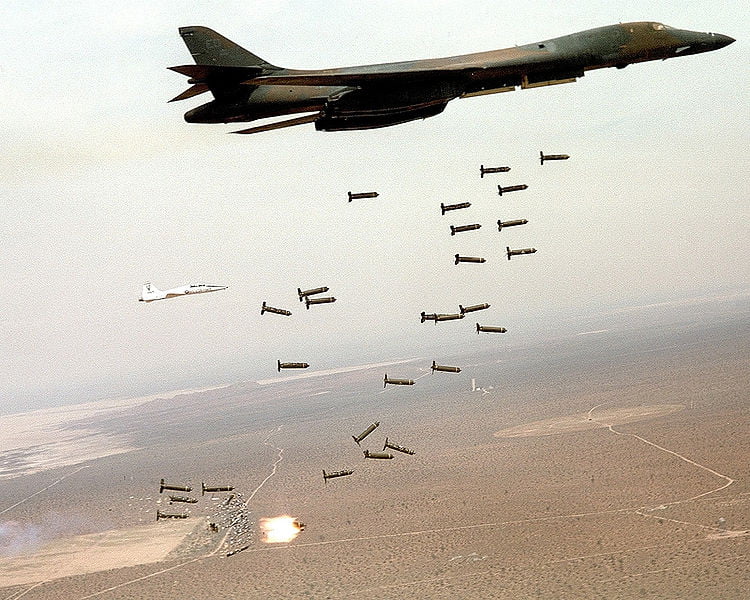Cluster bombs are back in the U.S. military arsenal. A Department of Defense memo released last week reversed an impending ban on the highly controversial weapons that had been set to come into effect on January 1, 2019.
Cluster bombs are controversial because they disperse smaller “bomblets” indiscriminately over a wide area–many of which fail to detonate on impact. Experts estimate that the “dud rate” on cluster bombs can reach 20 percent or higher–that is, that 20 percent or more of the bomblets will fail to detonate when used. The high rate of failure and haphazard nature of the dispersal means that unexploded ordnance can lay dormant for years or even decades after a conflict ends, posing a threat to civilians, including children. This danger is not hypothetical: in 2016, cluster bombs killed or maimed 971 civilians. As such, cluster bombs are widely reviled by human rights and arms control groups, and banned by over 100 countries under the 2008 Convention on Cluster Munitions.
While the U.S. has never ratified this convention, the U.S. military had decided under the George W. Bush administration in 2008 to phase out the use and production of cluster bombs, with a full ban on “unsafe” cluster bombs–that is, those weapons with a dud rate higher than one percent–set to take effect on January 1, 2019. Crucially, efforts to develop cluster bombs with a dud rate lower than one percent have consistently failed, so Bush administration’s ban would have effectively prohibited any U.S. military use of cluster bombs indefinitely.
Last week, however, the U.S. Department of Defense under the Trump administration quietly reversed the ban. In a memo, the Pentagon cited a refusal to “risk mission failure or accept the potential of increased military and civilian casualties by forfeiting the best available capabilities,” as their reason for the reversal.


The decision is a setback for the global campaign to end cluster bombs, and has come under intense criticism from opponents of the weapons and human rights groups. Amelie Chayer of the Cluster Munition Coalition noted in a statement that “only a small number of states use cluster munitions at the moment, and this includes Bashar al-Assad’s regime in Syria,” while wondering if this is “who the U.S. wants to align with?” Amnesty International called it a “profoundly retrograde step,” adding that it raised “serious questions about [the U.S. government’s] regard for the lives of civilians in war zones.”
The new policy also flies in the face of the last ten years of U.S. policy on cluster bomb use. After the Bush administration introduced the ban, the U.S. military under the Obama administration had largely continued to move away from producing and selling the weapons, as President Obama placed a hold on the sale of cluster bombs to Saudi Arabia in 2016, while the U.S. House of Representatives nearly voted to ban these sales outright. Until last week, it seemed that the U.S.–which had used the weapons only once since 2003–was ready to let cluster bombs go quietly into the night.
Instead, the Trump administration’s decision to reverse the ban means that the potential for use of cluster bombs, and with it the potential for greater civilian casualties, will remain a risk for the foreseeable future. The U.S. military’s decision to use the “mother of all bombs” in Afghanistan earlier this year–one of the most powerful non-nuclear weapons in the U.S. arsenal, and one that had never before been used due to the enormous risk it poses for civilians–shows that the Trump administration will not shy away from using weapons with high potential for civilian casualties. After years of slow progress towards eliminating them, the new policy and the precedent set by the military under the Trump administration represent a potentially grave about-face in the campaign to end cluster bombs.
